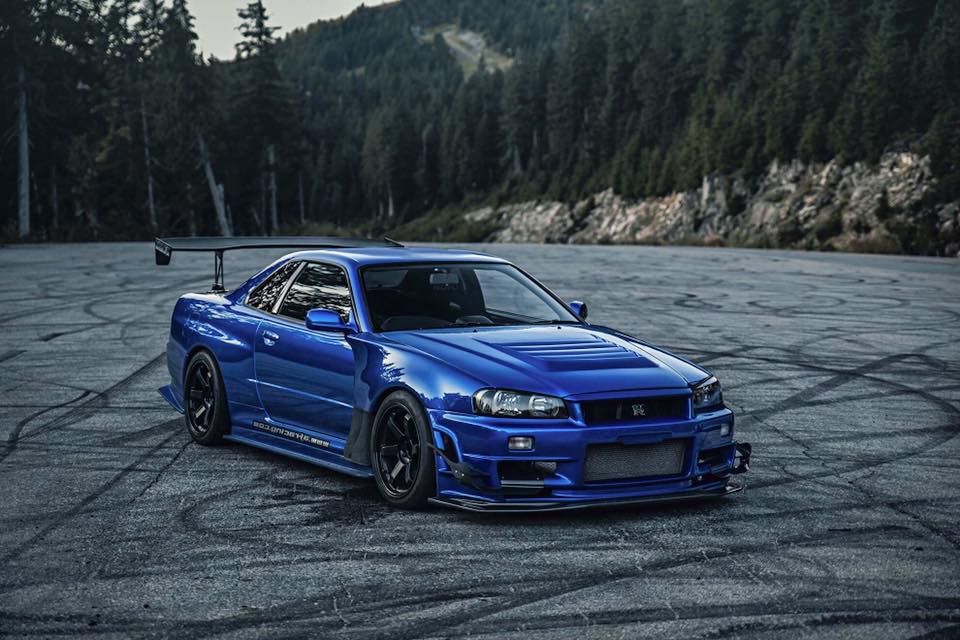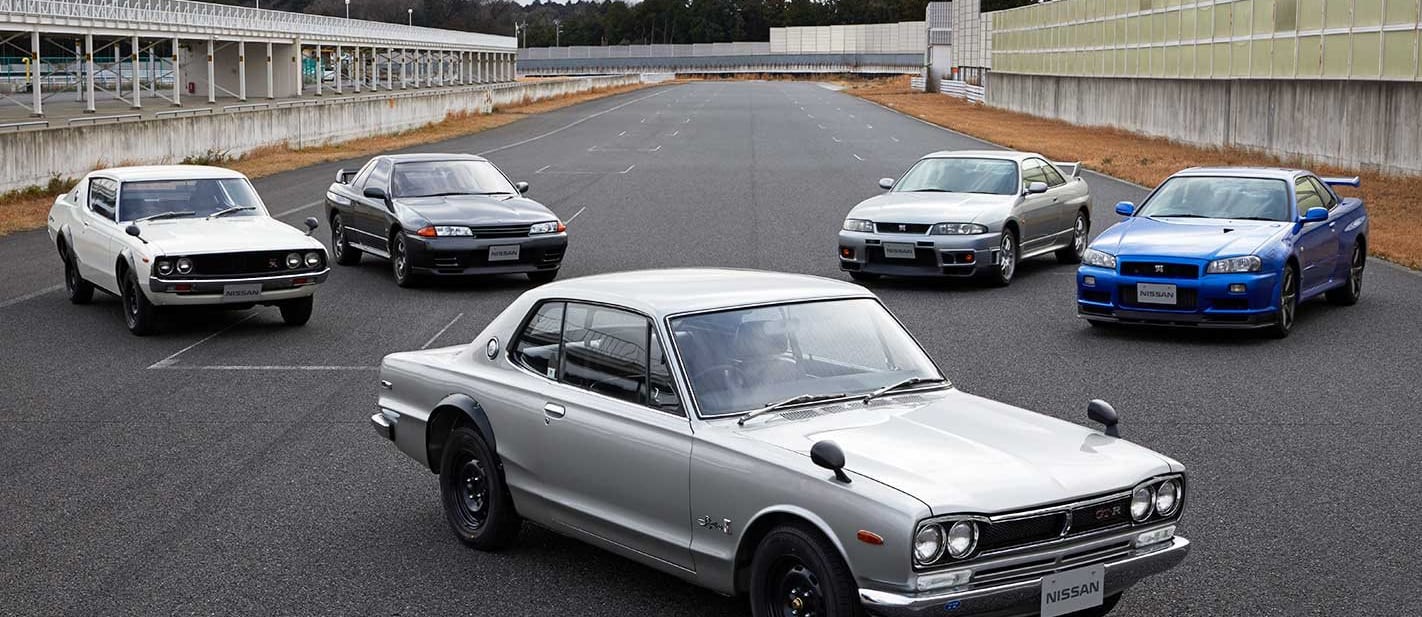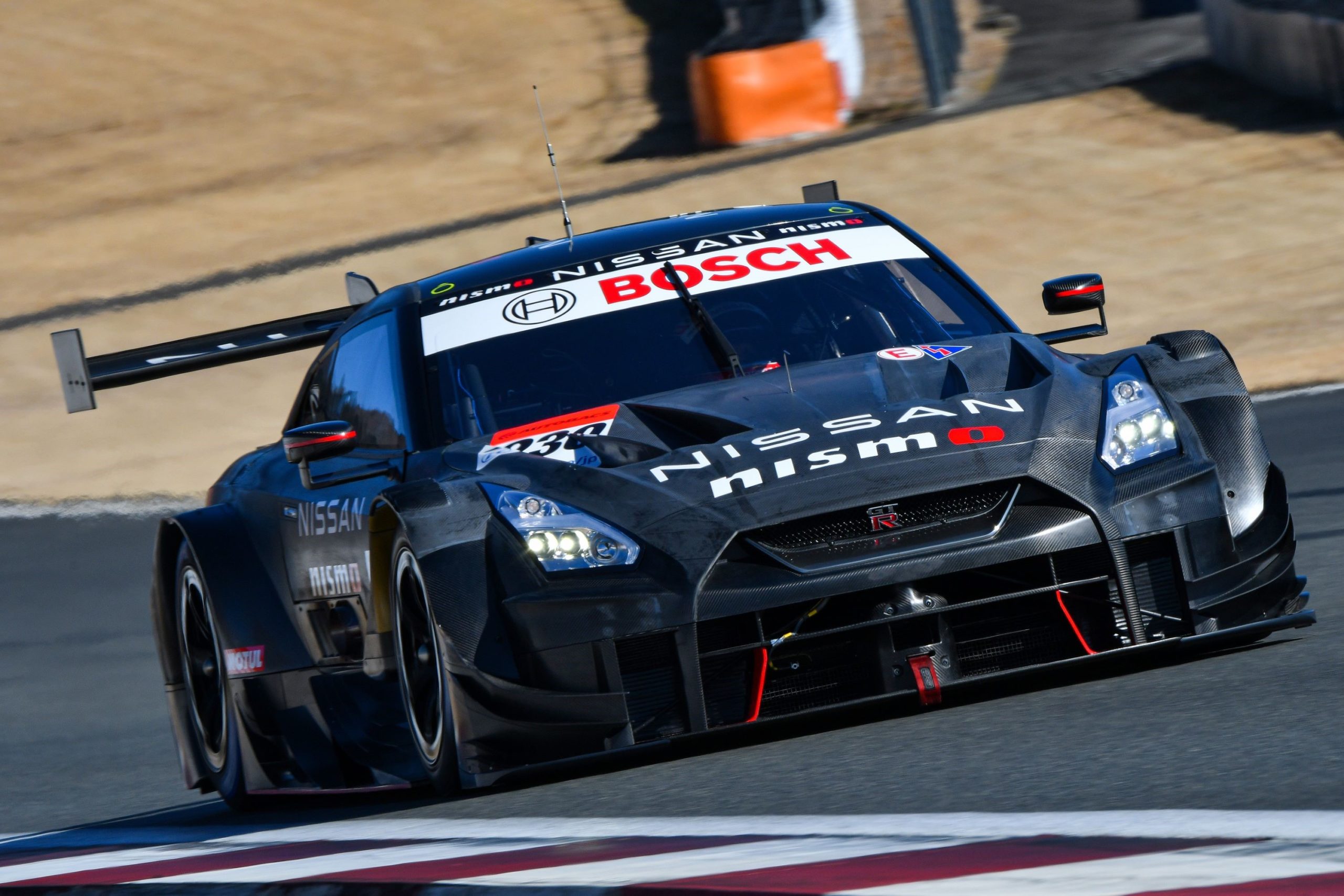NISSAN: GTR
Well Known Celebrated / Dominant Race Car
Known For:
"The Nissan GTR is one of the most celebrated, coveted, and legendary names in performance motoring history." - (GD)

Why Was The GTR So Strong In Racing?
Why Is The GTR Called Godzilla?
The Nissan GTR is one of the most celebrated, coveted, and legendary names in performance motoring history. In fact, on this website many of our most popular articles relate to the Nissan GTR and its various generations. From the R32 through to the current R35, the Nissan GTR has developed a cult following across multiple generations. It has featured in video games such as Gran Turismo, as well as in Fast & Furious movies. Many people have taken to referring to the GTR as ‘Godzilla’. It’s a name that seems to suit the vehicle so well. Much like the name “Batmobile” came to refer to the RX7 FD (at least in our part of the world) the name ‘Godzilla’ is closely associated with the Nissan GTR. But why is the GTR Godzilla? In this edition of Car Facts, we take a look at where the Skyline GTR earned the Godzilla name.
R32 GTR Destroys The Competition
One of the key reasons that the GTR came to be known as Godzilla is due to the fact that it was so dominant in Motorsport, particularly the R32 generation. The R32 GTR won races all around the world, and put on incredible displays of power, performance and precision in championships in Asia, Europe, and Australasia. For example, the R32 GTR was virtually unbeatable in the Japanese Touring Car Championship (JTCC) winning 29 races from 29 starts in its first season. It also took the JTCC series title from 1989-1993. In fact, the R32 GTR was so successful in Motorsport that it was even banned from some competitions in Australia, such as the Australian Touring Car championships (where it was banned at the end of 1992). Interestingly, it was this banning of the R32 GTR in Australia that ultimately led to what we now know as the “V8 Supercars” championship in Australia (non-Australian/Kiwi readers may be most familiar with the Bathurst 1000 race, the pinnacle of Australian motorsport). As it became clear that the R32 would no longer be eligible to compete, plans were drawn up for a V8 only racing series that would pitch Holden against Ford. This – for those who don’t know about V8 Supercars – is one of the biggest motorsport rivalries in the world, and in both Australia and New Zealand you will often be asked if you are a Holden or Ford supporter.
OG Godzilla
Because of the R32 GTR’s simply incredible motorsport performance in the late 80s and early 90s, it earned the name Godzilla because of the way it smashed up everything in its path. Why is the Nissan GTR called Godzilla? Because in its motorsport heyday, it was as destructive as the real creature! Wheels Introduces The GTR As Godzilla Another reason why the Nissan GTR is called Godzilla is due to an edition of Wheels magazine (published in Australia) in 1989. One of the reasons why the GTR is now known as Godzilla As far as we are aware, this was the first time that the GTR was actually referred to as Godzilla in any credible/mainstream print publication. This helped to reinforce the name in the marketplace. Being called something in a credible publication does help to make a name stick!
Conclusion - Why Is The GTR Called Godzilla?
To recap, there are two main reasons why the GTR earned the Godzilla nickname. Firstly, when the R32 was launched it was introduced as “Godzilla” by an edition of the Australian Wheels magazine, and the name stuck from there. Secondly, the R32 was so dominant in Motorsport that it destroyed everything in its path (a bit like the fictional Godzilla). Because of these two reasons, the name Godzilla has stuck for the GTR.

GTR History
Motor Athority
For the better part of four decades it was only a Japanese legend. Unobtainium here in the United States, the Nissan Skyline GT-R was a high-tech, high-performance coupe we could only get a glimpse of in Japanese magazines or experience virtually through video games. Outfitted with all-wheel drive, all-wheel steering, and a twin-turbocharged inline-6, it was understandably a car we drooled over, but only from afar. And that nickname: Godzilla. How cool was that? And then it came here in 2008, and it hasn't disappointed. The power is sudden, and the all-wheel-drive system puts it to the pavement to create supercar performance. The experience is a little bit digital and the looks are almost Japanese to a fault, but this is one of the best performance values on the market, despite annual price increases. But without a long domestic history, many readers may not be all that familiar with the story of the GT-R. The nameplate turned 50 in 2019, we're here today to remedy that problem one generation at a time. Nissan has a video out of all six generations of the GT-R, and you can read up on their history below. And while we're plenty happy with the current car, we're looking forward to the seventh generation.

First generation, 1969-1972
The Skyline sedan had been around since 1957, but the GT-R made its debut at the Tokyo Motor Show in fall 1968 and launched in February 1969. The beating heart of the beast was the S20 dual-overhead cam 2.0-liter in-line 6-cylinder engine, which produced 160 horsepower and 130 pound-feet of torque. The first-generation GT-R was known internally as code KPGC10 and carried the "Hakosuka" nickname, which was an amalgamation of the Japanese words for box and skyline. The car was 173 inches long with a 104-inch wheelbase, and it weighed 2,469 pounds. It could cover the quarter mile in 16.1 seconds and reach a top speed of 124 mph. It could corner, too, as it proved by winning the JAF Grand Prix in its debut race. The car became available as a coupe in 1971. All told, 1,945 of the first-generation cars were produced.

Second generation, 1973
The second-generation Skyline GT-R, code KPGC110, was offered only as a coupe and only in 1973. The S20 in-line-6 still powered the car, and like the first-generation, the only transmission was a 5-speed manual. The car unofficially became known as the “Ken & Mary” due to a song by a young couple used in the advertising campaign. Unfortunately, only 197 KPGC110 GT-Rs were built due to the oil crisis and the stricter emissions standards that choked performance in the mid 1970s.

Third generation, 1989-1994
After a 16-year hiatus, the Skyline GT-R returned, this time as a showcase for much more performance technology. The so-called R32 GT-R featured the new ATTESA all-wheel-drive system, all-wheel “Hicas” steering, and multi-link suspension front and rear. The RB26DETT 2.6-liter turbocharged inline-6-cylinder spun out 276 horsepower and 260 lb-ft of torque. Zero to 60 mph took 5.6 seconds and the quarter mile passed in 13.9 seconds. The wheelbase was down to 102.9 inches, but the length was up to 180.9 inches. A version built for FIA Group A racing put out about 550 horsepower and won the 1991 Spa-Francorchamps 24 Hours race. The total production run was 43,394 cars.

Fourth generation, 1995-1998
The R33 generation was mostly just an evolution of the R32. It featured the same engine, but torque increased slightly to 264 pound-feet. The 0-60 mph time was down to 5.0 seconds, but the greater achievement was a 7:59 lap of the Nürburgring. A monster R400 model made 395 horsepower thanks to bigger turbos and increased displacement to 2.8 liters. It could accelerate from 0 to 60 mph in four seconds flat. Launched in 1997, only 44 R400s were built. For most customers, the V.Spec model was the sportier choice, with firmer suspension, a lower ride height, and an active limited-slip rear differential. The R33 race cars earned the Godzilla nickname in Australia for their dominance over the Ford and Holden V-8s. That would soon spread to the production car.

Fifth generation, 1999-2002
The R34-generation of the GT-R benefitted from the racing and testing done for the two previous generations. It still made 276 horsepower "officially," and turbo lag was reduced, torque was increased, and a new Getrag 6-speed manual replaced the 5-speed. The body was also stiffer, the aerodynamics were improved, and several weight-saving measures were employed, including the use of a carbon fiber rear diffuser. The car was also shorter, as was the front overhang. An R34 GT-R has been featured in several of the "Fast and Furious" movies, giving U.S. car enthusiasts a taste for unobtainable Japanese performance cars.

Sixth generation, 2008 to present
The first GT-R to be offered in the United States, the R35, dropped the Skyline name. It arrived in Japan in December 2007 and in the United States in July 2008 with a starting price just under $78,000. The new engine was a twin-turbocharged VR38DETT 3.8-liter V-6 spinning out 480 horsepower and 430 pound-feet of torque. The Hicas all-wheel steering system was gone, and so was the 6-speed manual, replaced by a 6-speed dual-clutch transmission. The multifunction display was created by the same programmers who did the "Gran Turismo" video game. Performance was much improved, and it has improved steadily since the R35’s release. The R35 entered the 2020 model year with a special 50th anniversary package to mark the milestone. Today's base car makes 565 horsepower and the Nismo model churns out 600 horses. The top speed is now 193 mph, and 0 to 60 is as quick as 3.2 seconds. Unfortunately, the base car's price is $1153235 and if you want the Nismo you're looking at more than of $210,000. Godzilla has certainly grown up.
